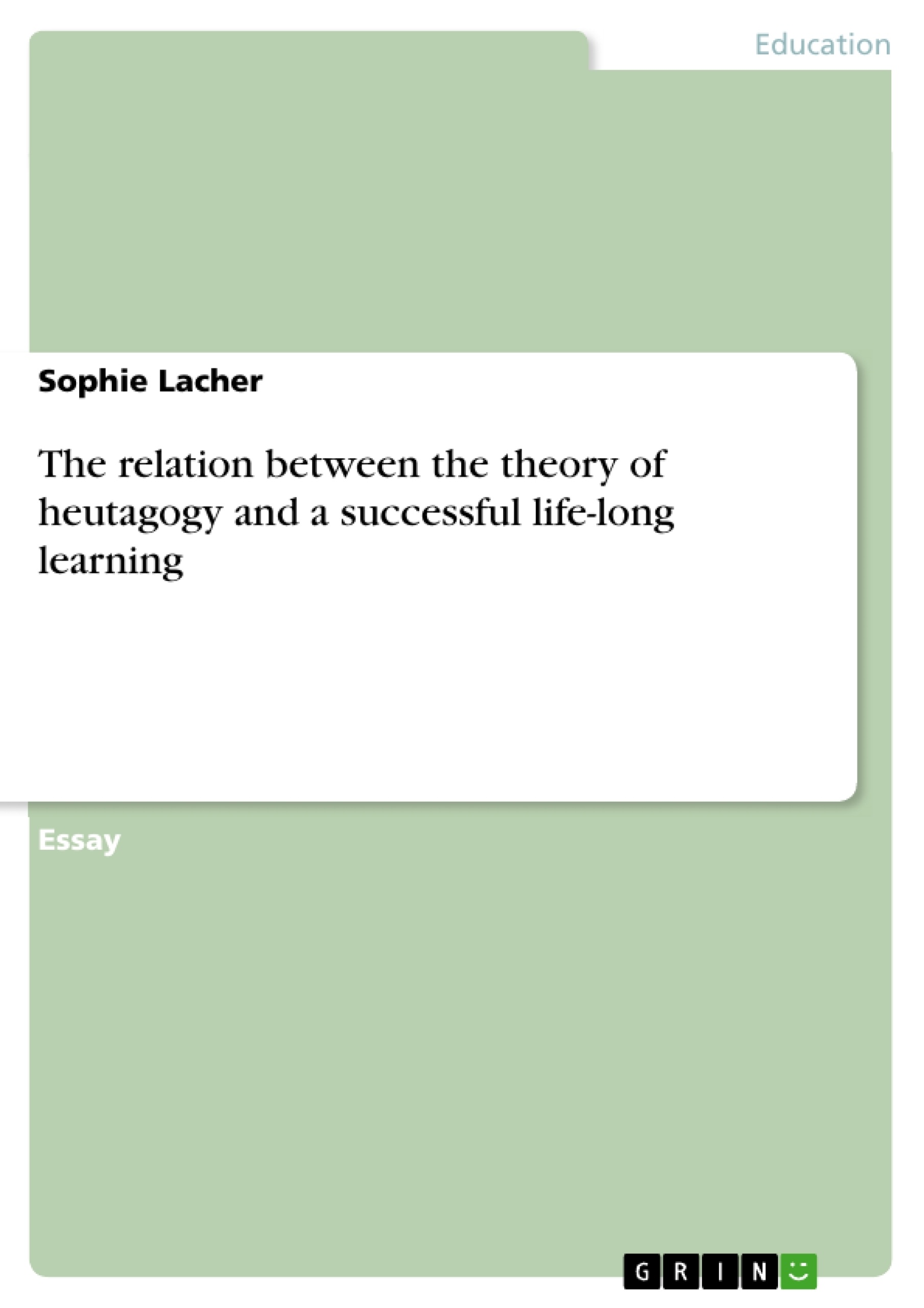Lernen - Was bedeutet das überhaupt und wie geht das?
Diese Frage untersucht das vorliegende Essay und stößt dabei auf das Konzept der Pädagogik, welches in der näheren Vergangenheit bereits durch das Konzept Andragogy im Hinblick auf die Erwachsenenbildung ausgebaut wurde. Der vorliegende Text untersucht nun diese beiden Theorien sowie eine neue Form des selbst gesteuerten Lernens, welche Heutagogy genannt wird und durch den technologischen Fortschritt begünstigt sowie durch Einrichtungen wie Fernuniversitäten Anwendung findet. Aber auch in der betrieblichen Weiterbildung - der Text nennt beispielsweise die Ausbildung von Krankenschwestern - findet das Konzept Anwendung.
Inhaltsverzeichnis (Table of Contents)
- The relation between the theory of heutagogy and a successful lifelong learning
- Pedagogy
- Andragogy
- Heutagogy
- Lifelong learning and heutagogy in distance education
Zielsetzung und Themenschwerpunkte (Objectives and Key Themes)
This document explores the relationship between heutagogy, a learner-centered approach to education, and successful lifelong learning. It delves into the theoretical foundations of heutagogy by contrasting it with traditional pedagogical and andragogical models.
- The significance of lifelong learning in a rapidly changing world.
- The role of self-directed learning in fostering individual growth and development.
- The evolution of learning models from teacher-centered to learner-centered approaches.
- The impact of heutagogy on distance education and learner autonomy.
- The potential of Web 2.0 technologies to support self-determined learning.
Zusammenfassung der Kapitel (Chapter Summaries)
- The document starts by defining lifelong learning and highlighting its importance in today's rapidly changing world. It discusses the evolving understanding of learning and how it extends beyond traditional school settings.
- The section on pedagogy explores the traditional teacher-centered approach, where the teacher assumes responsibility for deciding what and when students learn. It emphasizes the learner's dependence on the teacher and the importance of engagement in this model.
- The chapter on andragogy delves into the concept of adult learning, acknowledging the greater life experience that adults bring to their learning. It emphasizes learner control, self-responsibility, and the role of the teacher as a tutor and mentor in this model.
- The section on heutagogy introduces the concept of self-determined learning, where the learner takes the central role in designing and developing their own learning journey. It contrasts heutagogy with pedagogy and andragogy, emphasizing the higher level of autonomy and personal responsibility in this model.
- The final chapter explores the application of heutagogy in distance education. It emphasizes the importance of learner autonomy and the role of technology in supporting self-directed learning. It also discusses the characteristics of distance education learners and the potential of Web 2.0 technologies for enhancing heutagogical learning.
Schlüsselwörter (Keywords)
The key concepts and terms explored in this text include lifelong learning, heutagogy, pedagogy, andragogy, self-directed learning, learner autonomy, distance education, Web 2.0 technologies, and double-loop learning. These concepts highlight the shift from teacher-centered to learner-centered models, emphasizing the importance of individual agency and self-directed learning in today's rapidly changing world.
- Quote paper
- Sophie Lacher (Author), 2017, The relation between the theory of heutagogy and a successful life-long learning, Munich, GRIN Verlag, https://www.grin.com/document/371163



